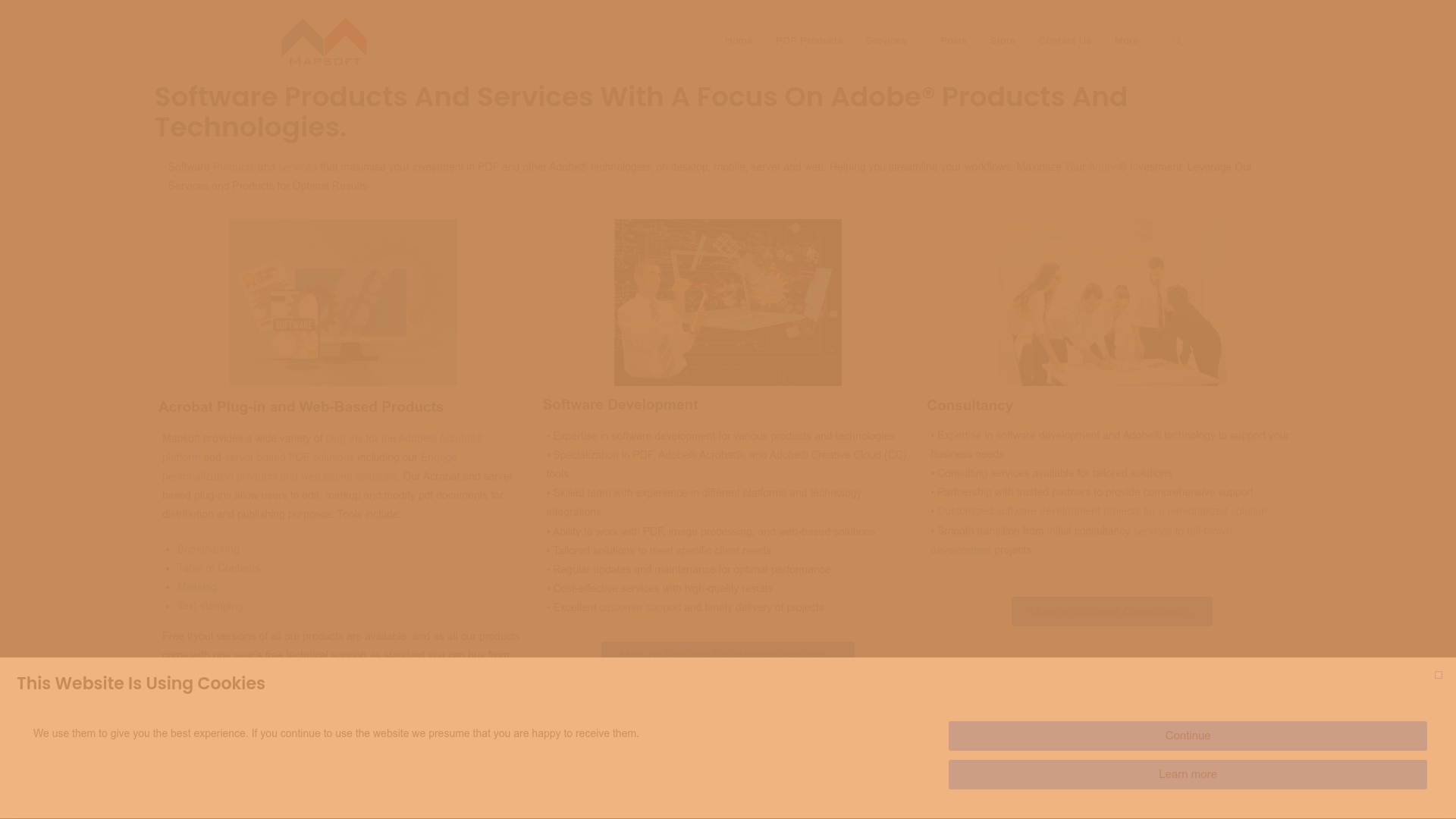Time management often feels like a never-ending struggle for busy professionals and it can seem like every minute is packed with urgent demands. Yet, despite this constant pressure, professionals interrupted every 11 minutes take an average of 25 minutes just to refocus. Most would think the solution is to grit your teeth and pack more into each day. The real breakthrough comes from rethinking your entire approach—because it is not about working harder, it is about managing priorities, goals, and focus in ways that radically boost results. What really matters might surprise you.
Table of Contents
- Understand Your Priorities
- Set Specific Goals
- Use Time Blocking Techniques
- Eliminate Distractions
- Leverage Technology Tools
- Create A Daily Schedule
- Review And Adjust Regularly
- Practice Work-Life Balance
Quick Summary
| Takeaway | Explanation |
|---|---|
| Understand and Prioritize Tasks | Identify crucial tasks to focus on by conducting a personal productivity audit and utilizing strategic prioritization methods like the Eisenhower Matrix. |
| Set SMART Goals | Define specific, measurable, achievable, relevant, and time-bound goals to enhance clarity and increase the likelihood of achieving professional objectives. |
| Utilize Time Blocking | Schedule specific periods for focused work on tasks, limiting multitasking to improve concentration and productivity. |
| Eliminate Digital Distractions | Reduce interruptions by setting boundaries for digital communications and creating focused work environments to enhance efficiency. |
| Create a Flexible Daily Schedule | Develop a daily plan that accommodates unexpected interruptions, prioritizing high-energy periods for challenging tasks and incorporating buffer times. |
1: Understand Your Priorities
Successful time management for professionals starts with a crystal clear understanding of your priorities. Without strategic prioritization, professionals often find themselves spinning wheels and expending energy on tasks that do not substantially contribute to their core objectives.
The first step involves conducting a comprehensive personal productivity audit. This requires an honest assessment of how you currently spend your time and identifying activities that genuinely move the needle on your professional goals. Harvard Business Review research suggests that high performers consistently distinguish between urgent tasks and truly important work.
To effectively prioritize, professionals should consider implementing a structured approach:
- Categorize tasks by impact: Differentiate between high value and low value activities
- Use the Eisenhower Matrix: Organize tasks based on urgency and importance
- Set clear weekly objectives: Limit your focus to 3-5 critical professional goals
Prioritization is not about doing more. It is about doing the right things at the right time. This means learning to say no to activities that do not align with your primary professional objectives. When you understand your priorities, you create space for meaningful work that drives your career forward.
Additionally, McKinsey research indicates that professionals who systematically prioritize tasks are 40% more likely to achieve their professional goals. This underscores the critical importance of developing a robust prioritization strategy.
Remember that priorities are dynamic. Regularly reassess your professional landscape, adjust your focus, and remain flexible. By maintaining a clear, intentional approach to understanding what truly matters, you transform time management from a theoretical concept into a practical, powerful career advancement tool.
2: Set Specific Goals
Transforming time management from a vague concept to a concrete strategy requires setting specific, actionable goals. Professionals who articulate precise objectives are significantly more likely to achieve meaningful progress in their work and personal development.
The most effective goal setting follows the SMART framework: Specific, Measurable, Achievable, Relevant, and Time Bound. Research from Stanford University demonstrates that individuals who create well defined goals are 10 times more likely to accomplish them compared to those with generic aspirations.
To craft powerful professional goals, consider these strategic approaches:
- Break large objectives into smaller, manageable milestones
- Establish clear timelines for each goal
- Create quantifiable metrics to track progress
Precision matters when establishing professional goals. Instead of stating “I want to improve my skills,” a more effective goal would be “I will complete three professional certification courses in digital marketing by December 31st.” This level of specificity transforms abstract desires into concrete action plans.
Productivity experts from Forbes suggest writing down goals and displaying them in a visible location. This practice creates psychological commitment and serves as a constant visual reminder of your professional targets.
Goal setting is not a one time activity. Successful professionals regularly review and adjust their objectives, understanding that flexibility is crucial in a dynamic work environment. By maintaining a clear, specific, and adaptable goal structure, you create a powerful roadmap for professional growth and effective time management.
3: Use Time Blocking Techniques
Time blocking represents a powerful strategy for professionals seeking to maximize productivity and create structured workflow management. This technique involves dedicating specific time segments to particular tasks, transforming scattered work patterns into deliberate, focused performance windows.
Strategic time blocking eliminates multitasking and enables deep concentration on critical professional responsibilities. Research from the University of California reveals that multitasking can reduce productivity by up to 40% and significantly increase cognitive stress.
Professionals can implement time blocking through several strategic approaches:
- Categorize tasks by complexity and energy requirements
- Assign specific time windows for focused work
- Include buffer periods between intense work sessions
The most effective time blocking strategies incorporate realistic time allocation. This means understanding your personal energy rhythms and scheduling demanding tasks during peak performance hours. For knowledge workers, this often means tackling complex projects during morning hours when mental clarity is highest.
Productivity research from Harvard Business Review suggests that successful executives typically divide their workday into intentional segments. These segments might include dedicated periods for email management, strategic planning, collaborative meetings, and deep work requiring intense concentration.
Implementing time blocking requires consistent practice and periodic refinement. Professionals should track their productivity, analyze which time blocks generate the most significant results, and continuously adjust their schedules. By transforming time from an abstract concept into structured, intentional segments, you create a powerful framework for professional excellence and efficient workflow management.
4: Eliminate Distractions
In an era of constant connectivity, eliminating distractions has become a critical skill for maintaining professional productivity. Digital interruptions fragment concentration and significantly reduce work efficiency, making focused performance increasingly challenging.
Research from the University of California reveals that professionals are interrupted every 11 minutes on average, with each disruption requiring approximately 25 minutes to regain full concentration. This stark statistic underscores the profound impact of seemingly minor interruptions.
Professionals can systematically reduce distractions through strategic interventions:
- Implement digital communication boundaries
- Create dedicated focus environments
- Use technology management tools
Proactive distraction management requires understanding your personal vulnerability points. For many professionals, smartphone notifications, email alerts, and social media platforms represent significant concentration disruptors. By consciously designing communication protocols, you can dramatically improve work performance.
Productivity experts from Stanford recommend several practical strategies. These include turning off non essential notifications, establishing specific communication check in windows, and creating physical workspace boundaries that minimize interruptions.
Technology offers additional support through focus applications that block distracting websites and track productivity. Some professionals utilize specialized software that limits internet access during designated work periods, creating enforced concentration zones.
Ultimately, eliminating distractions is not about complete isolation but about creating intentional, controlled professional environments. By understanding your unique distraction triggers and implementing targeted management strategies, you can transform your work approach and significantly enhance overall professional effectiveness.
5: Leverage Technology Tools
Modern professionals can dramatically enhance time management through strategic technology integration. The right digital tools transform workflow efficiency, enabling precise task tracking, seamless communication, and intelligent productivity optimization.
Gartner Research indicates that companies leveraging advanced productivity technologies see an average 25% improvement in operational efficiency. These tools go beyond simple task management, offering comprehensive workflow solutions.
Professionals should consider implementing technology tools across several critical domains:
- Project management platforms
- Automated scheduling applications
- Communication and collaboration software
Artificial intelligence powered tools are revolutionizing professional productivity. Machine learning algorithms can now predict task completion times, recommend optimal work schedules, and automate repetitive administrative functions. MIT Technology Review highlights how these intelligent systems are becoming increasingly sophisticated in understanding individual work patterns.
When selecting technology tools, professionals should learn more about team collaboration strategies with Adobe Solutions. The key is finding integrated solutions that communicate seamlessly across different platforms and support your specific workflow requirements.
Critical considerations include ease of use, compatibility with existing systems, and robust security features. While technology offers tremendous potential, successful implementation requires thoughtful selection and consistent usage. Professionals must invest time in understanding and configuring these tools to maximize their transformative potential.
Ultimately, technology tools are not about replacing human expertise but augmenting professional capabilities. By selecting the right digital companions, you can create a more intelligent, responsive, and efficient work environment.
6: Create a Daily Schedule
Creating a structured daily schedule transforms abstract time management concepts into tangible, actionable strategies. Successful professionals recognize that consistent scheduling is not about rigidity but about intentional workflow design.
Columbia University research demonstrates that individuals who maintain consistent daily schedules are 50% more likely to achieve their professional objectives. The key lies in developing a flexible yet disciplined approach to daily planning.
Effective daily scheduling requires strategic considerations:
- Prioritize most challenging tasks during peak energy hours
- Include realistic buffer times between activities
- Review and adjust schedule daily
Morning preparation becomes crucial in establishing a productive daily rhythm. Productivity experts from Stanford recommend dedicating the first 30 minutes of your day to reviewing goals, organizing tasks, and mentally preparing for key challenges.
Professionals should approach scheduling as a dynamic process. A well constructed daily schedule accounts for unexpected interruptions while maintaining core productivity objectives. This means building flexibility into your planning, allowing for quick pivots without completely derailing your professional momentum.
Technology can support effective scheduling. Digital calendars, task management applications, and integrated planning tools enable professionals to create detailed, adaptable schedules that sync across multiple devices and platforms.
Remember that a daily schedule is a personal blueprint. What works for one professional might not work for another. Continuous experimentation, honest self assessment, and willingness to modify your approach are essential in developing a scheduling strategy that genuinely enhances your professional performance.
7: Review and Adjust Regularly
Time management is a dynamic process that requires continuous evaluation and strategic adaptation. Professionals who treat their productivity strategies as flexible frameworks rather than rigid systems consistently achieve superior results.
McKinsey Global Research indicates that organizations and individuals who regularly review and adjust their performance metrics are 35% more likely to achieve long term success. This principle applies directly to personal time management strategies.
Key aspects of effective performance review include:
- Conduct weekly performance assessments
- Track objective productivity metrics
- Identify consistent performance patterns
Self reflection becomes a critical productivity tool. By dedicating time to understanding what works and what does not, professionals transform potential obstacles into opportunities for improvement. Harvard Business Review recommends maintaining a professional journal to document productivity insights and track evolutionary changes in work patterns.
Technology can significantly support this review process. Modern productivity applications offer sophisticated analytics that help professionals visualize their work patterns, identify inefficiencies, and quantify improvements over time.
The most successful time management approaches recognize that adaptability is more important than perfection. Each review cycle should focus on incremental improvements rather than wholesale transformations. Small, consistent adjustments compound into substantial performance enhancements.
Ultimately, regular review is not about criticism but about strategic optimization. By maintaining an open, curious approach to your professional development, you create a continuous improvement cycle that drives sustained productivity and personal growth.
8: Practice Work-Life Balance
Work-life balance represents a critical cornerstone of sustainable professional performance. Far from being a luxury, this approach is fundamental to maintaining long term productivity, mental health, and overall career effectiveness.
World Health Organization research reveals that professionals experiencing consistent work-life imbalance are 60% more likely to experience burnout, significantly impacting their career trajectory and personal well being.
Strategic work-life balance requires intentional boundaries:
- Establish clear working hours
- Create physical and digital separation between work and personal spaces
- Schedule regular personal time and self care activities
Mental and physical restoration is not optional but essential for high performance. Stanford University studies demonstrate that professionals who maintain robust personal lives consistently outperform those who sacrifice personal time for work.
Implementing work-life balance means recognizing that productivity is not measured by hours worked but by results achieved. This requires developing efficient work strategies that maximize professional output while preserving personal energy and emotional bandwidth.
Technology can support this balance by enabling flexible working arrangements, providing productivity tracking tools, and creating boundaries between professional and personal digital spaces. The goal is not complete separation but harmonious integration of professional responsibilities and personal wellness.
Ultimately, work-life balance is a personal journey. What works for one professional might differ for another. The key is developing a personalized approach that respects your unique professional goals, personal needs, and overall well being. By treating yourself as a holistic individual rather than simply a professional resource, you create a sustainable path to long term success.
Below is a comprehensive table summarizing the core time management strategies professionals can use to boost productivity, remain focused, and achieve sustainable work-life balance as discussed throughout the article.
| Time Management Tip | Core Action or Strategy | Key Benefits and Outcomes |
|---|---|---|
| Understand Your Priorities | Conduct a productivity audit and use tools like the Eisenhower Matrix to focus on high-impact tasks | Prevents wasted effort, aligns energy with main professional objectives |
| Set Specific Goals | Use the SMART framework and break down objectives into actionable, measurable steps | Increases clarity, commitment, and likelihood of success |
| Use Time Blocking Techniques | Allocate set time periods for focused tasks and build in buffer times | Minimizes multitasking, boosts concentration and workflow structure |
| Eliminate Distractions | Set digital boundaries, design focus environments, and use tech to manage interruptions | Enhances efficiency, reduces time lost to disruptions |
| Leverage Technology Tools | Implement project management, scheduling tools, and AI-powered productivity solutions | Streamlines workflow, improves tracking, and automates routine tasks |
| Create a Daily Schedule | Prioritize tasks by energy levels, include preparation and review, and stay flexible | Establishes consistent routines, adapts to interruptions smoothly |
| Review and Adjust Regularly | Perform weekly productivity assessments and update strategies using tracked data | Drives continuous improvement, ensures adaptability to change |
| Practice Work-Life Balance | Enforce boundaries, schedule personal time, and maintain clear separation between work and personal life | Supports long-term health, prevents burnout, promotes sustainable success |
Transform Your Time Management Into Real Results With Mapsoft
Struggling to turn your time management strategies into measurable productivity? Many professionals spend hours crafting task lists, blocking calendars, and setting goals, yet run into obstacles with document workflows, complex PDF tasks, and the challenge of keeping everything integrated. As discussed in the article, true efficiency comes from not just understanding priorities and setting goals, but also from leveraging the right technology to eliminate distractions and streamline daily routines.

Unlock consistent productivity now by enhancing your document processes with Mapsoft.com. Discover how our PDF Hub lets you automate, edit, convert, and secure large volumes of files so you can focus on the most meaningful tasks on your priority list. When you connect your time management efforts to the advanced tools at Mapsoft.com, barriers vanish and your professional performance rises. Make the next step in your productivity journey today by visiting our site and exploring solutions designed for true workflow optimization.
Frequently Asked Questions
What are the best techniques for prioritizing tasks?
Effective techniques for prioritizing tasks include categorizing them by impact, using the Eisenhower Matrix to distinguish between urgency and importance, and setting clear weekly objectives focused on critical goals.
How can I create specific and actionable goals for my time management?
To create specific and actionable goals, follow the SMART framework—making them Specific, Measurable, Achievable, Relevant, and Time Bound. Breaking larger objectives into smaller milestones and establishing clear timelines also enhances goal clarity.
What is time blocking and how can it improve my productivity?
Time blocking is a scheduling technique that assigns specific time segments to particular tasks. It improves productivity by eliminating multitasking and allowing for deep focus on essential responsibilities during designated periods.
How can I reduce distractions while working?
To reduce distractions, implement digital communication boundaries, create dedicated focus environments, and utilize technology management tools that limit interruptions from notifications and social media.
Recommended
- 7 Proven Strategies for Increasing Team Productivity –
- 8 Essential Change Management Tips for Business Success –
- 8 Hybrid Work Best Practices for Business Success –
- 8 Essential Employee Wellbeing Ideas for Every Workplace – Mats4U
- Daily House Cleaning Tips for Busy McKinney Homes 2025



